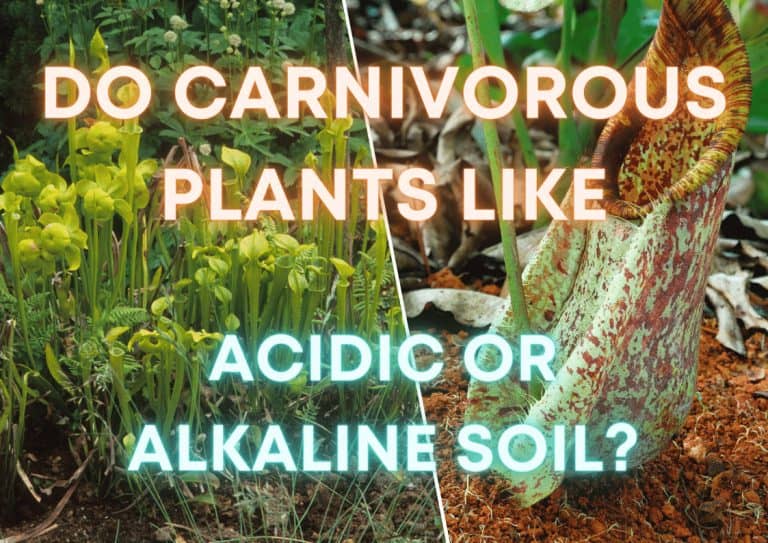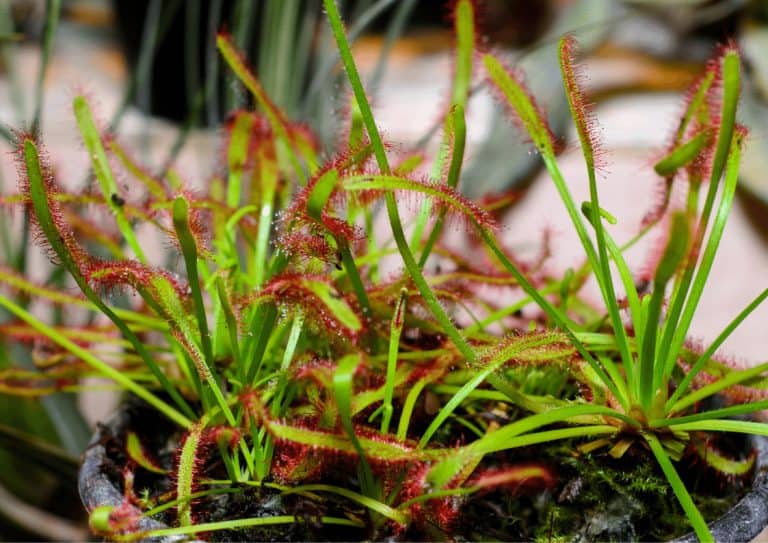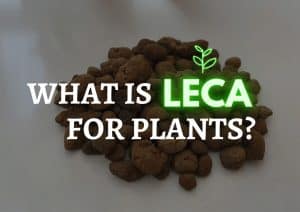Do Carnivorous Plants Like Acidic or Alkaline Soil?
- Lakeisha Ethans
- October 20, 2022
If you buy something using the retail links in our articles, sometimes we earn a small affiliate commission. This does not impact the products we recommend.
When kept as ornamental plants most carnivorous plants prefer growing in strongly acidic soil with the ideal pH range being in the range of pH 3.5 – 5.5. This mimics the conditions of their natural bog environments where organic matter is slow to break down and nutrients such as sodium, magnesium and calcium that raise pH are leached from the substrate.
Of course there are always exceptions to the rule, and in the case of carnivorous plants it’s the Pinguicula genus (Butterworts) which are quite content to grow in neutral or even slightly alkaline soils.
If you are a hobby grower of carnivorous plants like us it’s easy to get hung up on the many variables that go into creating an optimal houseplant substrate. Getting drainage and nutrition right is challenging enough without introducing pH into the equation.
Personally when attempting to address a plant’s pH preference I find it easier to think about what growing conditions that plant naturally thrives in. If you meet these conditions as best possible, very often a suitable soil pH will be met as a by-product.
In the case of carnivorous plants, this means providing a growing medium with a consistently high water table that then causes the decomposition of organic matter to slow, and a lack of nutrients to subsequently be available to the plant.
Acidic soil is an almost inevitable consequence of those conditions.

Why do carnivorous plants need acidic soil?
A better way to answer this question is to think about what abiotic conditions cause acidic soil to be naturally generated. It’s these conditions that carnivorous plants seek ahead of a pH value.
So it’s not that carnivorous plants need acidic soil, it’s that carnivorous plants need a growing medium that can retain high levels of moisture which in turn slows the decomposition of organic matter and thus limits the release of nutrients.
These are the conditions that generate an acidic soil.
A bought in acidic soil on its own won’t help a carnivorous plant to thrive if it’s accompanied with substandard care.
What components should be present in the potting mix of carnivorous plants?
Of course, all carnivorous plants may have slightly different preferences for soil composition.
With that being said, the presence of pre-mixed carnivorous plant soil gives us an idea of what generally works for these types of plants.
Traditionally the first component that goes into a carnivorous plant potting mix is Sphagnum peat moss. Sphagnum moss is highly acidic, absorbs and holds a large volume of water and boasts pH levels of between 3 and 5.
Lightweight and primarily inexpensive, peat moss is the main organic component of bogs where many carnivorous plant species are naturally found.
However harvesting and using components of peat, including peat moss, is not a sustainable resource and should be avoided if at all possible.
A great alternative to sphagnum moss for carnivorous plants kept at home is coconut fiber or coir; however you should not use coconut products straight out of the package as the inherent salt content of raw coconut fiber is excessive for plant growing purposes.
Multiple rounds of soaking and draining will be necessary to reduce the concentration of salts so that it doesn’t harm your carnivorous plant.
The next component necessary is sharp sand or inert cover sand. Also known as horticulture sand, this material is made from various gritty, crushed rocks and positively impacts pH, as it is free from lime and harmful salts. It is essential to use non-leaching sand, as this will not absorb and retain salt.
Sharp sand is essential in most plant mixes, providing adequate drainage by creating small air pockets in the overall sand composition. This is great for even this most hardy of carnivorous plants, ensuring good oxygen flow, reducing the risk of water clogs, and preventing fungus growth.

Finally, there’s perlite. Not all carnivorous plants necessarily need perlite, but most general mixes for this category of flora do make use of a small amount of this pH neutral component. As it is inorganic but still natural, it’s often considered a useful additive for all types of plant mixes.
The biggest problem with perlite is that some branded varieties contain additives that cause minor increases in salt levels. Check the label to ensure whatever perlite you choose is made from expanded volcanic glass only.
Some individuals opt to remove perlite from the overall mixture, but the extra drainage and aeration provided by perlite are typically worth the trouble of finding suitable options. In addition, it slows down compaction and works better than similar components like vermiculite and Diatomaceous Earth.
Our Favorite Houseplant Soil Mixes And Substrate
Round up
Generally speaking, carnivorous plants grow best in acidic soil with a pH of between 3.5 and 5.5. This is the range present in the swamp-like environments that they have evolved to call home.
The right pH level can be achieved at home by using a potting mix which allows moisture to be retained, and contains a low level of organic matter.

Lakeisha Ethans
Houseplant Writer
Mother to two humans and hundreds of plant babies. Lakeisha uses her 15 years of experience as a content writer to specialise in simplifying what you need to know to grow and care for all indoor plants.
Similar Posts
Are Orange Peels Good For Houseplants?
Adding organic matter to houseplant soil usually isn't a bad idea. But what about orange peel? Is this citrus rind too acidic to be good for houseplants?
What Is LECA For Plants? (Soil Upgrade?)
Kiln fired clay pebbles such as LECA have properties which make them an ideal substrate for plant growers into hydroponics and hydroculture.



